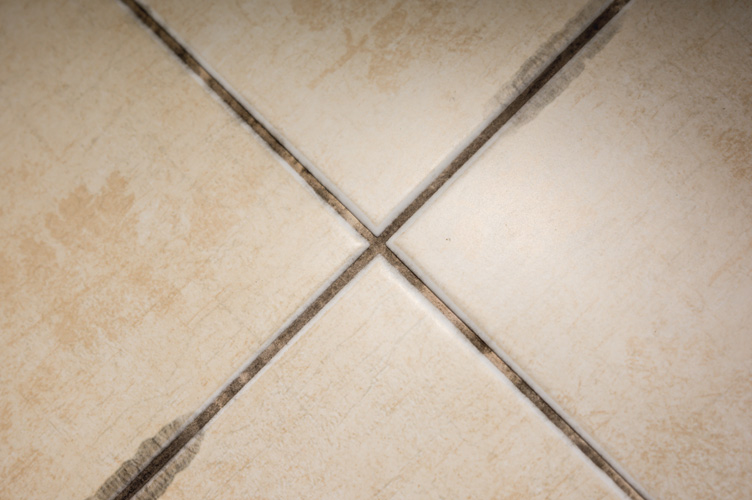Since the beginning of time, mold has been a nuisance for homeowners, so you’re not alone in dealing with its appearance. Our South Houston Groutsmith team has found that while homeowners know mold growth is or can be a real problem in their spaces, they do not know how to effectively combat it.
Here are some of the ways we recommend caring for your South Houston tiled spaces to keep mold from overtaking their surfaces.
What Stimulates Mold Growth?
Unlike most plants, mold does not require sunlight to grow, which is why it is often found in dark areas. But there are three essential elements required for the production and spread of mold:
- Warmth
- Moisture
- Organic materials
Where all three of these materials are present, you can be sure to experience mold growth. So, the best way to reduce mold spreading is to cut off one or all of these sources.
Here are some ways to help inhibit mold growth in your home.
1. Proper Ventilation
Rooms that experience excessive moisture should be properly ventilated. This can be done through a vent or by opening a window. The most important room to ventilate is the bathroom.
Due to steam from hot water running in your shower, bathrooms are extremely humid rooms. That humidity plays into mold’s development, growth, and spreading. Be sure to run your bathroom vent through the entirety of your shower and leave it running for up to twenty minutes after your shower has ended.
If you are lucky enough to have a window in your bathroom, consider cracking it open during your shower to allow steam and water vapor to escape. Homes that lack sufficient air movement provide the perfect conditions for mold development, which is another reason why cracking a window can keep your bathroom (or any room) mold-free.
2. Squeegee
This tip is specifically designed to help keep mold out of your bathroom shower. After each shower, use a squeegee to remove excess water, running it from the top of your shower to the bottom. If you have glass shower doors, make sure to do this on the glass as well.
3. Wipe It Up (Right Away)
It’s tempting to tell yourself that you’ll clean up a spill later. But one of the best ways to protect your tile and grout from mold growth is to clean up spills and splatters right away (and it’s free too).
Moisture, grease splatters, food particles, and other organic materials that fall to your floor and are left for any period of time have the opportunity to penetrate into your tiled surfaces. But cleaning up a spill right after it occurs eliminates these mold growth stimulants from garnering this opportunity and will keep your tile much cleaner and mold-free.
If your home has a pool, make sure to dry the tiled areas after family and guests have returned inside from the fun.
4. Keep Damp Cloths Off the Floor
The fibers in cloth materials are just the kind of organic substances that mold feeds off of. You may have noticed that damp clothes and towels quickly garner a mildew smell—because they give mold and mildew everything they need to thrive.
Throw those clothes on the ground, and you give mold the chance to move from cloth to tile.
After a shower, be sure to properly hang your towel to dry, keeping it off the floor and keeping it from accumulating mold. Don’t throw wet clothes, cloths, or blankets onto the tile in your bedroom or laundry room. Ensure they go into a basket, but allow them the opportunity to dry out beforehand if possible.
And an often-forgotten source of wet material is area rugs. Entryway rugs, shower mats, even kitchen mats can get wet from spilled water, not fully dried-off kids, or tracked in rainwater. Check your rugs periodically to ensure you are not allowing wet mats to sit on your floor and produce mold.
5. Store Soaps and Creams Elsewhere
Mold has to eat, just like any other living organism. Therefore, water is not the only factor contributing to mold growth. Soap scum provides it with food too. Keep soap scum out of your bathroom by removing, drying, and storing your soaps and creams outside of your shower.
Wipe up any soap residue that is left on the wall or floor tile.
6. Routine Cleanings
Cleaning your floors plays a large role in reducing mold’s ability to grow and thrive. Establishing a schedule for daily cleanings, weekly deep cleans, and annual professional services can go a long way in protecting your grout and tile surfaces.
Your daily cleanings should be removing any soap, grease, dirt, water, and food buildup on the tile. Weekly cleanings should utilize a safe and effective cleaning agent to more thoroughly and deeply scrub your grout and tile, ridding the pores of any bacteria they may be harboring and thoroughly cleaning the surfaces.
But to really keep your tile and grout in top shape and mold-free, hire a professional tile cleaning company for an annual cleaning.
7. Regular Sealing
To keep water and soap residue from penetrating the pores of your bathroom tile and grout, have them professionally sealed. By applying a sealer, you create a protective barrier over the surface of your tile. This inhibits mold growth by keeping moisture and the organic materials needed to feed mold from collecting. And where mold does not have moisture or food, it cannot thrive.
Defeat Mold in Your Home
Don’t give mold a leg to stand on in your home. By utilizing these tips, you can help keep mold at bay. And when you are ready for a professional to give you the edge on mold, we are ready to help. If you live in the South Houston area, our team is ready to tackle your grout and tile needs. Get a free estimate.
